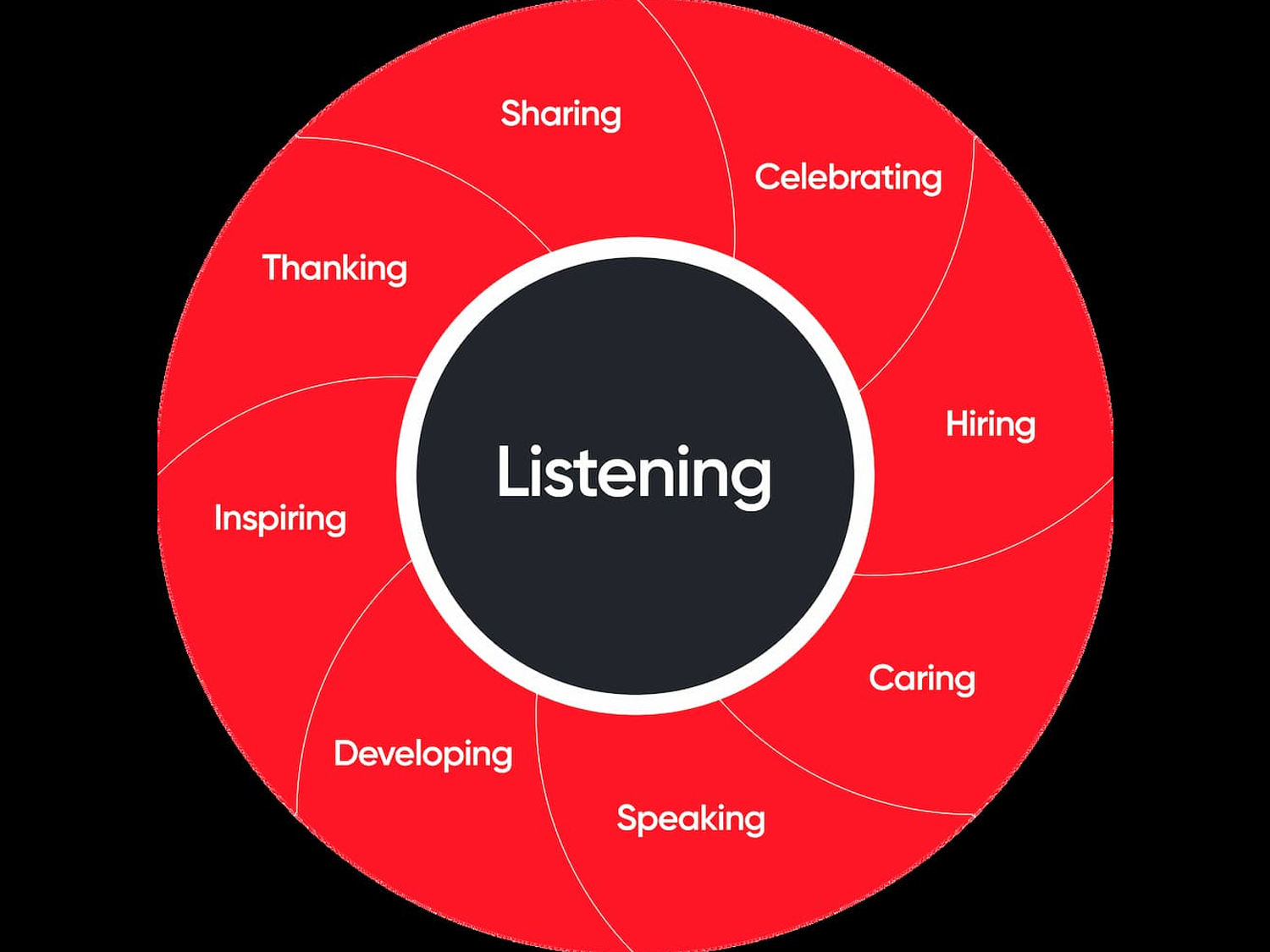High-trust leadership, Managerial Communication, Sharing
The energy company, ranked No. 80 on the Fortune 100 Best Companies to Work For®, takes extraordinary measures to allow employees to act like owners of the business.
Most companies will say they value employees with an entrepreneurial mindset. That doesn’t always mean employees are given the information or authority to act like an owner of the business.
At Hilcorp Energy Company, No. 80 on the Fortune 100 Best Companies to Work For® List in 2024, there’s a careful strategy that ensures every employee can participate in decisions. It all starts with transparency.
“We give every employee access to the company’s financials, share our measures of business success, and we teach them how to understand them,” says Mike Brezina, senior vice president, human resources at Hilcorp. “We open the books and share our financial measures such as cash flow, margin, production rate, lifting costs, investments, oil and gas price impacts, storage costs, and more.”
It’s a remarkable amount of trust that company leaders show to Hilcorp’s rank and file. Information about the health of the business and financials are consistently updated in daily stand-up meetings, monthly companywide lifting cost meetings, and quarterly reviews.
“We believe that there is no such thing as over communicating,” Brezina says. “All employees are invited, and all meeting materials are made available internally. As a result, each employee understands how they can personally impact Hilcorp’s success.”
This is borne out in the data. In Hilcorp’s most recent Great Place To Work® survey, nine in 10 (93%) employees said they understood how they can positively impact company culture and 88% said they have the information and training to do their job.
The idea was implemented after Hilcorp’s founder Jeffery Hildebrand met Jack Stack, author of “The Great Game of Business” and was introduced to the concept of open-book management. The company quickly embraced the principle: “A company of owners will outperform a company of employees any day of the week.”
The five-layer strategy
When every employee is given the necessary information, the next step is to give them responsibility for decisions that affect them.
Hilcorp Energy Company operates under what it calls its “five-layer strategy” — a rule for the entire organization that requires no more than five levels between an individual contributor and the CEO of the company.
“The flattened organization makes us nimble, encourages the entrepreneurial mindset, and removes unnecessary barriers in the decision-making process,” Brezina says. An example of this philosophy in action is Hilcorp’s asset teams, responsible for all oil and gas assets in their geographic region. An asset team’s five layers begin with operator roles, progressing to foreman, operations manager, asset team leader, and executive.
“In our business, urgency and empowerment are essential,” Brezina says. “We want everyone to be aligned, act like owners, do the right thing with a sense of urgency, and get better every day.”
The result? Employees know what expectations leaders have for them, and feel empowered to innovate and execute.
At Hilcorp, 96% of employees say they are given a lot of responsibility, and 90% say people quickly adapt to change. In a market survey of 4,400 employees at typical U.S. companies, only 61% of respondents said people quickly adapt to change at their workplace.
“Every employee knows what we are trying to accomplish,” Brezina says. “This is how we stay aligned.”
Tips for others
How can others implement this level of transparency?
Brezina offers some tips:
1. Make it easy to know the score
Transparency isn’t about overwhelming employees with data. Goals should be clearly defined, the factors to success identified, and data made available to employees in ways that will help them perform their job better.”
Clarity and simplicity must be part of the strategy. “When you walk into a baseball game, mid game, what do you want to know?” Brezina explains. “What’s the score? Who’s batting? What inning? Et cetera. This is no different for a business.”
2. Get everyone to participate in every step of the process
At Hilcorp, almost every employee participates in developing and setting the annual plan that outlines goals for the business — nearly 90%.
“Whether through identifying projects, developing a budget, or setting goals, the decisions and actions of each teams’ plans starts from the bottom-up,” Brezina says. “Decisions are then rolled up into the company-wide annual goals that are shared at every lifting cost meeting.”
As a result, nearly eight in 10 (78%) employees at Hilcorp report that they’re able to influence decisions that affect them, compared to just 51% at a typical U.S. company.
3. Ensure everyone gets a fair share of profits and rewards
Every department at Hilcorp participates in its generous annual bonus plan and incentives are tied to business metrics to which every team contributes.
“No team or department is pitted against each other,” Brezina says. “We all work as a team towards our shared goals, enabling us to fully align to our business and our work.”
Every employee gets the same bonus percentage, regardless of their role at the company.
“There is no individual component, no team component, and no differences by role or level,” Brezina says. “The bonus plan is tied to business metrics that we can control and is communicated at every lifting cost meeting.”
4. Use surveys to measure your culture
How are Hilcorp leaders sure that these efforts are paying off? It shows up in their Great Place To Work survey, the only engagement survey Hilcorp uses each year.
“Once we receive our results, we generate reports for each department showing the historical trends of their data and highlight the areas of strength and improvement areas,” Brezina says. “The teams review their data, create action plans, and implement their plans. These plans become the team goals by which they are measured and held accountable.”
The survey asks employees whether they have the information and resources they need to do their job, whether leaders make their expectations clear, and whether employees can participate in innovation — all experiences that build trust and contribute to business performance.
“Great Place To Work has been a critical partner in building our survey and providing great analytic tools, allowing us to get better and better data,” Brezina says. “We are able to home in on the specific themes of the feedback we receive from our employees that result in meaningful improvements.”
Benchmark your workplace
Discover what employees value about working at your company, and how you can boost retention rates and increase productivity and performance with Great Place To Work Certification™.







